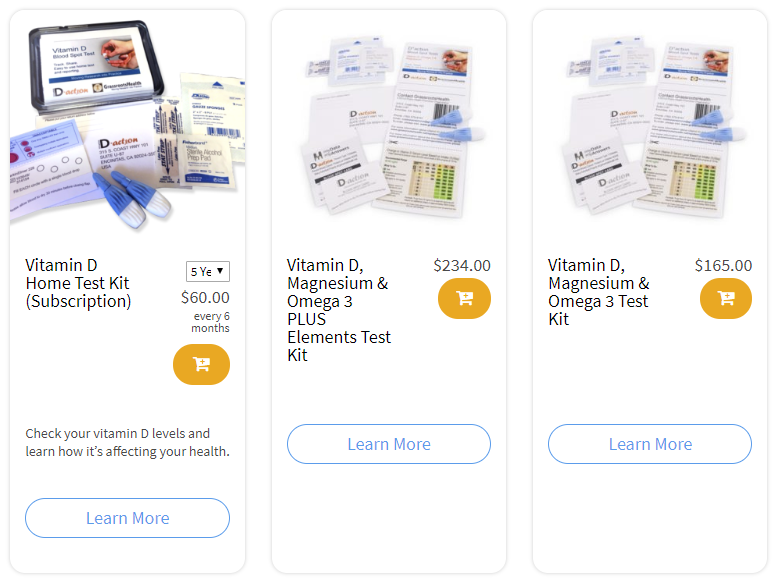Published on August 11, 2020
 As we saw in an earlier post, Omega-3 Index levels vary by location among GrassrootsHealth participants. In addition to Omega-3 Index, GrassrootsHealth also offers testing for your AA:EPA ratio (as an add-on to the same Omega-3 Index blood sample), which is the ratio of your primary pro/anti-inflammatory omegas. Today, we’ll look at how the AA:EPA ratio varies by location.
As we saw in an earlier post, Omega-3 Index levels vary by location among GrassrootsHealth participants. In addition to Omega-3 Index, GrassrootsHealth also offers testing for your AA:EPA ratio (as an add-on to the same Omega-3 Index blood sample), which is the ratio of your primary pro/anti-inflammatory omegas. Today, we’ll look at how the AA:EPA ratio varies by location.
What are the AA:EPA Ratios of participants in the United States and Canada?
Among GrassrootsHealth participants worldwide, the average AA:EPA ratio is 9.3. For the three countries with the greatest number of participants who have measured their AA:EPA ratio, the average is 9.7 for those in the United States, 7.1 for those in Canada, and 5.0 for those in the United Kingdom. Below is a map showing the average AA:EPA ratio by state / province / territory for those residing in the United States or Canada.
Higher AA:EPA ratios have been linked to the development of chronic inflammatory conditions. Generally, a lower ratio showing a close balance is better for health; however, the optimal range for health has not been established. Some experts consider the desirable range for the AA to EPA ratio to be 2.5 to 11; others consider a range of 1.5 to 3 to be low risk, 3 to 6 to be moderate risk, 7-15 to be elevated risk, and above 15 to be high risk. Knowing your ratios can help you take more specific steps to achieve an ideal ratio.
Are You Getting Enough Healthy Omega-3s?
Do you know what your Omega-3 Index is? Check yours today! After you receive your Omega-3 Index results, we encourage you to use the Omega-3 Calculator to determine an estimated amount of how much more EPA+DHA you will need to reach 8% (or other desired goal). EPA+DHA is found in fish and many omega-3 supplements, but be sure you check how much EPA+DHA is in the specific types of fish you eat and the omega-3 supplements you take.
Are You Getting Enough Vitamin D to Help Yourself?
We’re in a time of great crisis that could be greatly affected by making sure you and everyone you know has a serum level of at least 40 ng/ml. Help us help you.
Do you know what your vitamin D level is? Be sure to test today to find out, and take steps to keep it within a target of 40-60 ng/ml or 100-150 nmol/L! Give your immune system the nutrients it needs to support a healthy you and protect yourself from unnecessary diseases.
GrassrootsHealth Nutrient Research Institute is preparing to do a Community RCT with the use of our myData-myAnswers nutrient health system that over 15,000 people are already using for their health. We will demonstrate how one can use the Nutrient Research Model established by Dr. Robert Heaney to establish the effect of vitamin D serum levels of at least 40 ng/ml (100 nmol/L) on risk reduction with different ethnicities in the population. Please let us know if you’re interested in helping sponsor this project.
CLICK HERE for updates and new information about the project.
Through GrassrootsHealth Nutrient Research Institute, you can also test your essential elements magnesium, copper, zinc and selenium, toxins such as lead, mercury and cadmium, as well as your omega-3 levels, inflammation levels and thyroid stimulating hormone (TSH) level. Find out your levels today! Log on to the test selection page (click the link below) to get your tests and see for yourself if your levels can be improved.
Make sure you track your results before and after, about every 6 months!
Click Here to Access the Test Page
How can I track my nutrient intake and levels over time?
To help you track your supplement use and nutrient levels, GrassrootsHealth has created the Personal Health Nutrient Decision System called
For each specific supplement, you can track what days you take it, how much, and many other details. This will help you know your true supplemental intake and what patterns of use work for you to reach and maintain optimum nutrient levels. Check it out today!









